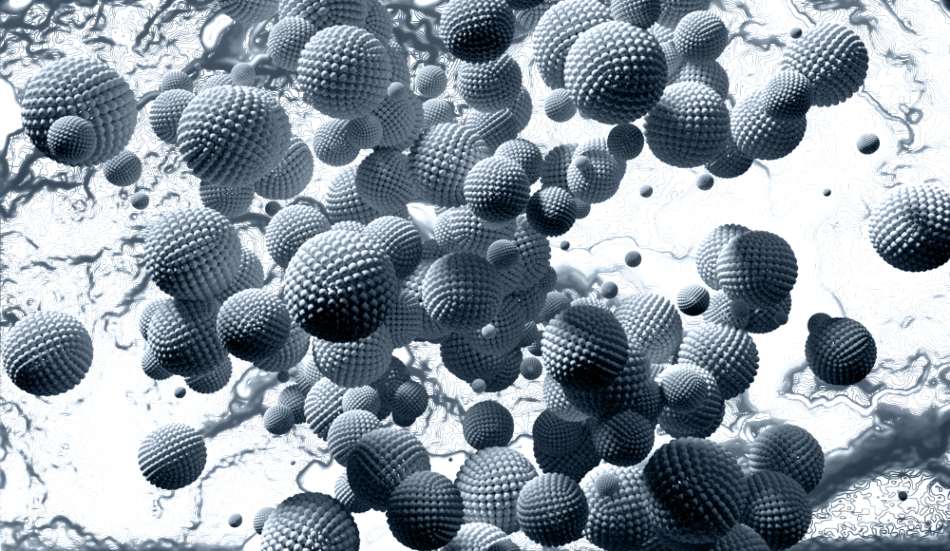
Image Credit: GiroScience/Shutterstock.com
There are several ways spin polarization is observed in nanomaterials, but until recent years it was always considered an impossibility. Spin polarization remains essential in understanding and applying ‘spintronics’, but scientists are regularly surprised by some of the seemingly ‘random’ effects that occur during experimentation with different nanomaterials.
How and Why?
"Where does this spin polarization come from? The electrons are interacting with one another, and molybdenum disulfide also exhibits a very weak spin orbit coupling. These two factors presumably have a massive influence on the system.”
Roch, J. via Phys.org 2019
A 1966 theorem assumed the absence of spin-orbit interaction, discovering spontaneous spin polarization an interesting puzzle for many in the scientific community.
Before explaining how it can be observed in different nanomaterials, it is important to understand the benefits of spontaneous spin polarization and why many are excited about it.
There are two significant benefits.
- Spontaneous spin polarization allows us to study long-range systems that interact with one another, e.g., telecommunications, remote control, etc.
- Spontaneous spin polarization also allows us to stimulate gauge fields, a useful technique in the study and application of quantum mechanics. Being able to not only study but manipulate sub-atomic particles along with their wave fields has long been a dream for quantum physicists around the world and spin polarization can help.
How to Observe
In 2016, scientists presented an experimental study of narrow line Dysprosium MOTs. The study revealed that by combining radiation pressure and gravitational force, spontaneous polarization of the electronic spin of the particle occurs.
The spin was measured using a Stern-Gerlach separation of spin levels. This revealed that the gas becomes almost entirely spin-polarized for large laser frequency de-tunings. In this instance, the laser de-tunings reach the optimal operation of the MOT with samples of typically 3 x 108 atoms. The spin polarization reduced the complexity of the radiative cooling description allowing for a simple model that enabled scientists to take measurements.
Graphene and Spin Polarization
It would be hard to talk about spontaneous spin polarization without mentioning graphene, one of the most used and sought after nanomaterials. The zig-zag-like atomic structure at the edges of graphene produces a flat energy band. Because electrons have infinite mass at the flat band, they all localize at the edges with the highest density. Here, spontaneous polarization can be observed because of the mutual Coulomb interaction. This occurs despite a material consisting of only carbon atoms with sp2 bonds.
Spontaneous Spin Polarization in 2D Nanomaterials
Physicists from the University of Basel discovered one of the most interesting examples of spontaneous spin polarization in their studies of two-dimensional nanomaterials. Despite the theorem mentioned above, from the 1960s speculation that spontaneous spin polarization cannot occur in two-dimensional materials, the Basel physicists were able to demonstrate spin alignment of free electrons in a 2D nanomaterial.
Doctoral students Jonas Roch and Nadine Leisgang made the discovery using graphene. Filling the M0S2 layer with free electrons, they then exposed it to a weak magnetic field. This caused all free electrons to spin in the same direction. They also discovered the spin could be switched in the other direction by merely reversing the magnetic field.
This and other observations of spontaneous spin-polarization demonstrates exciting possibilities for our future understanding and application of nanomaterials.
References and Further Reading
Spontaneous spin polarization in two dimensional material – Physics.org. - 2019. Available at: https://phys.org/news/2019-03-spontaneous-polarization-two-dimensional-material.html
Spontaneous spin polarization demonstrated in a two-dimensional material – Nanowerk - 2019. Available at: https://www.nanowerk.com/nanotechnology-news2/newsid=52334.php
Spontaneous spin polarization and spin pumping effect on edges of graphene antidot lattices – Physica Status Solidi - 2012. Available at: https://onlinelibrary.wiley.com/doi/abs/10.1002/pssb.201200042
Spontaneous Spin Polarization and Electronic States in Platinum Nano-Particle – New trends in superconductivity – 2002. Available at: https://www.researchgate.net/publication/300824288_Spontaneous_Spin_Polarization_and_Electronic_States_in_Platinum_Nano-Particle
Spin polarization and quantum spins in Au nanoparticles – International Journal of Molecular Sciences - 2013. Available at: https://www.ncbi.nlm.nih.gov/pmc/articles/PMC3794745/
Disclaimer: The views expressed here are those of the author expressed in their private capacity and do not necessarily represent the views of AZoM.com Limited T/A AZoNetwork the owner and operator of this website. This disclaimer forms part of the Terms and conditions of use of this website.